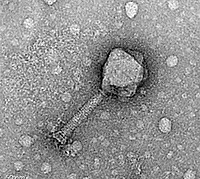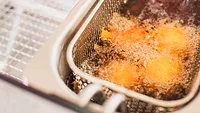Pitt State Researchers Use Nanosensors to Detect E. coli in Water, Food

The chemistry department at Pittsburg State University (Pittsburg, KS) have come up with a new way to detect foodborne bacteria in food and water in less than an hour.
PSU chemist Tuhina Banerjee, assistant professor Santimukul Santra, professor and biochemist James McAfee and six chemistry students were able to combine magnetic resonance imaging (MRI) and fluorescence to create a device that enables scientists to detect the presence of dangerous bacteria in food and water. The team’s research was inspired by widespread news stories of food related E. coli outbreaks in the U.S. As a result, they began pondering way to use nanosensors to try to detect common pathogens, first in water.
The nanosensors are made up of iron oxide particles combined with an optical dye and antibodies that latch onto the E. coli cells. The nanosensors clump around the bacteria and this can be detected by MRI, for very small amounts, and fluorescence, for large amounts. The method was initially tested using water from PSU’s University Lake, along with other water resources. The nanosensor was “very good” at picking up contamination, according to researchers.
The next step, in order to make a rapid detection system available in the field, is miniaturization.
“The next step is to work with engineers to develop a chip that can take the process out of the lab and into the field,” says Banerjee. In the meantime, the researchers are exploring ways the technique they’ve developed could be used for the rapid detection of other pathogens, such as influenza and Zika.
As a result of this work, one student--Tyler Shelby--was awarded with the Star Trainee Award from the Kansas IDeA Network of Biomedical Research Excellence and he is following up the research on E. coli with a paper that explores how nanosensors may be used for the rapid detection of the influenza virus.
PSU’s research was recently published in the American Chemistry Society’s journal Infectious Diseases. Since publishing their work, the team has been getting calls from researchers around the world.
Sign up for Food Safety Magazine’s bi-weekly emails!
Looking for quick answers on food safety topics?
Try Ask FSM, our new smart AI search tool.
Ask FSM →








